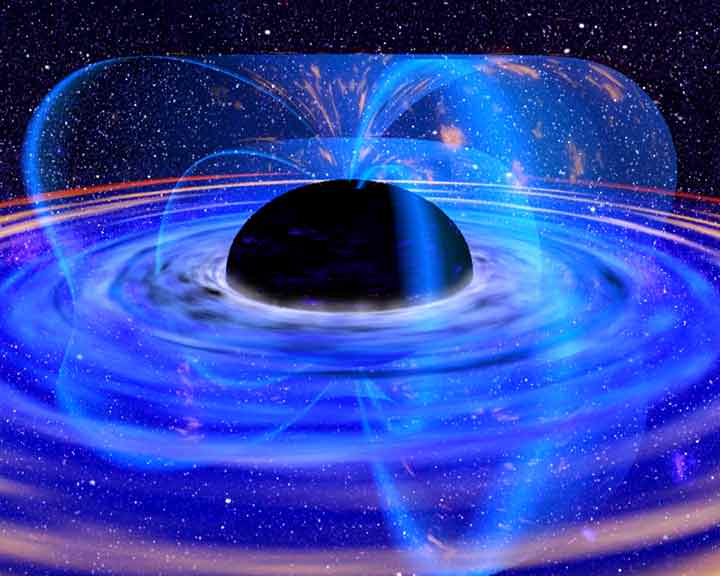[/caption]
A black hole is an object where the gravity is so powerful that nothing, not even light can escape it. They’re called black holes because they emit no radiation. If you take any object and compress it down, there will be a point that it becomes a black hole. If you could compress the Sun down to a radius of 2.5 km, it would be come a black hole. For the Earth, that radius is 0.9 cm. And a large mountain might be smaller than a nanometer. That radius is called the Schwarzschild Radius.
The term was named after the mathematician Karl Schwarzschild, who first developed the formula: Rs = 2 GM/c2. M is the mass of the body, G is the universal constant of gravitation, and c is the speed of light. You can use this formula to calculate the Schwarzschild radius of any object.
And so, an object smaller than its Schwarzschild radius is known as a black hole. The surface of a black hole acts as an event horizon; a point at which nothing, not even light or radiation can escape it.
What actually happens to the mass within the Schwarzschild radius is a mystery. Some theorists believe that an extremely dense state of matter will stop the black hole from compressing any further, while others believe that the black hole will continue compressing infinitely down. It’s unknown if you would encounter the black hole itself when passing through the event horizon, or if you would still continue to travel down to the compressed inner black hole itself. Whatever the case, once you pass within the Schwarzschild radius, there’s no escape.
We have written many articles about black holes for Universe Today. Here’s an article about how you can maximize your time falling into a black hole. And here’s an article about the search for medium-sized black holes.
Want more information? Check out the formula from Wolfram Research, and here’s more info from Swinburne Astronomy Online.
We have recorded an episode of Astronomy Cast all about black holes. Check it out here: Episode 18 – Black Holes Big and Small.

